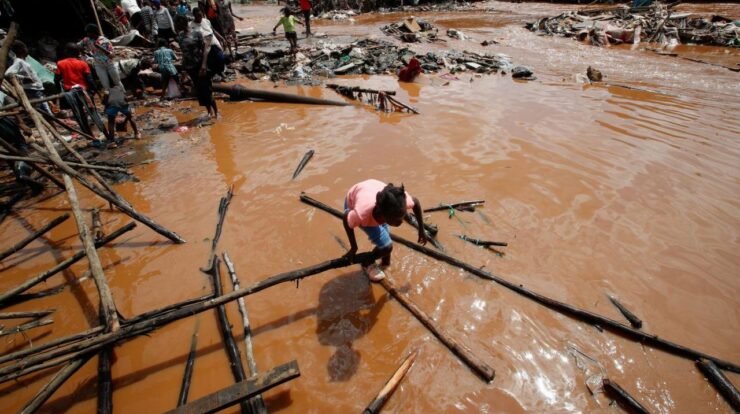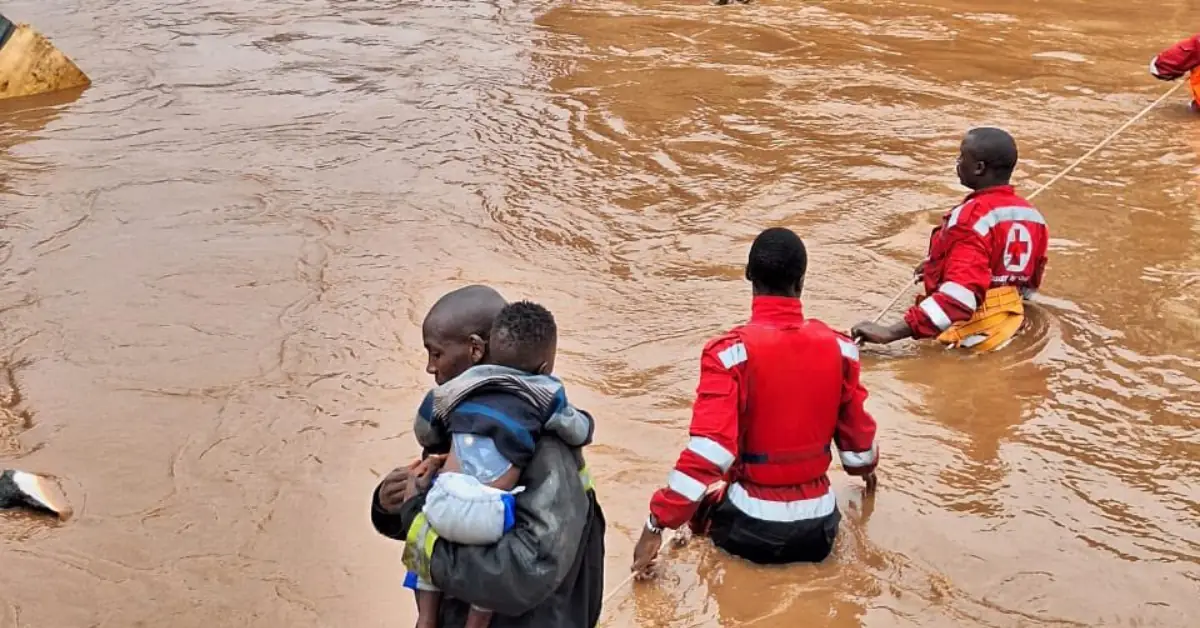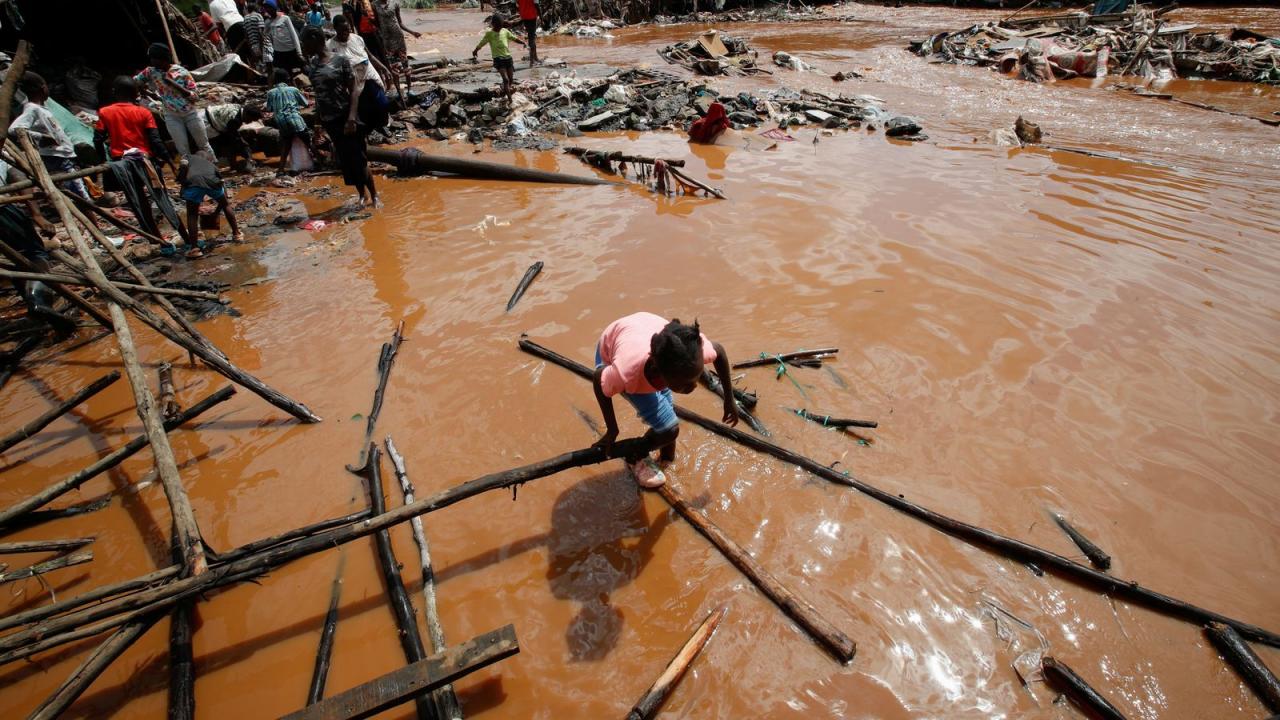
Kenya nairobi flooding – Kenya’s capital, Nairobi, has been battered by relentless flooding, leaving a trail of destruction and untold suffering in its wake. This catastrophe has severely impacted the city’s infrastructure, economy, health, and social fabric, raising urgent concerns about mitigation and prevention measures.
The torrential rains have caused widespread damage to roads, bridges, and buildings, disrupting transportation, communication, and essential services. Businesses and industries have suffered severe economic losses due to supply chain disruptions, revenue loss, and property damage.
Impact on Infrastructure: Kenya Nairobi Flooding

The torrential rains in Nairobi have wreaked havoc on the city’s infrastructure, damaging roads, bridges, and buildings.
Roads and Bridges
- Major roads such as Uhuru Highway and Mombasa Road have been flooded, disrupting traffic flow.
- Several bridges, including the Haile Selassie Bridge, have been damaged, limiting access to certain areas of the city.
Buildings
- Many buildings, including residential and commercial structures, have been flooded, causing extensive damage to property and belongings.
- The flooding has also compromised the structural integrity of some buildings, posing safety hazards.
Consequences
The damage to infrastructure has significant consequences for transportation, communication, and essential services:
- Traffic congestion has increased, making it difficult for people to get around the city.
- Communication networks have been disrupted, affecting businesses and residents.
- Access to essential services, such as hospitals and schools, has been hampered.
Economic Consequences
The flooding has had a devastating impact on businesses and industries in Nairobi.
Disruptions to Supply Chains
- Flooding has disrupted supply chains, leading to shortages of goods and services.
- Businesses are facing difficulties in transporting goods to and from the city.
Loss of Revenue
- Many businesses have been forced to close temporarily, resulting in a loss of revenue.
- The tourism industry has been particularly hard hit, with hotels and restaurants experiencing a sharp decline in bookings.
Damage to Property
- The flooding has caused extensive damage to business properties, including equipment, inventory, and infrastructure.
- Businesses are facing significant costs to repair and replace damaged assets.
Economic Losses
According to estimates by the Kenya National Chamber of Commerce and Industry, the flooding has caused billions of shillings in economic losses.
Health and Sanitation Concerns
The flooding in Nairobi has raised serious health and sanitation concerns.
Waterborne Diseases
- Stagnant water provides a breeding ground for mosquitoes, which can transmit diseases such as malaria and dengue fever.
- Contaminated water can also lead to waterborne diseases such as cholera and typhoid.
Displacement
- Many people have been displaced from their homes due to flooding.
- Displacement increases the risk of overcrowding and unsanitary conditions, which can contribute to the spread of disease.
Clean Water and Sanitation
- Access to clean water and sanitation has been disrupted in many areas of Nairobi.
- Healthcare organizations are working to provide clean water and sanitation services to those in need.
Social Impacts
The flooding in Nairobi has had a significant social impact on the city’s residents.
Displacement and Loss of Livelihoods
- Many people have lost their homes and livelihoods due to the flooding.
- Displacement and loss of livelihoods can lead to poverty and social unrest.
Disruption of Communities, Kenya nairobi flooding
- The flooding has disrupted communities, making it difficult for people to connect with each other.
- Community services, such as schools and healthcare facilities, have been affected.
Psychological and Emotional Toll
- The flooding has taken a psychological and emotional toll on individuals and families.
- People who have lost their homes and belongings are experiencing trauma and stress.
Mitigation and Prevention Measures
There are several measures in place to mitigate and prevent flooding in Nairobi.
Existing Measures
- The city has constructed drainage systems to channel rainwater away from flood-prone areas.
- The government has implemented regulations to control development in floodplains.
- Community-based initiatives have been established to raise awareness about flood risks and promote preparedness.
Effectiveness and Areas for Improvement
- While these measures have helped to reduce flooding in some areas, they have not been fully effective in preventing flooding in all parts of the city.
- There is a need to improve the drainage system, particularly in informal settlements.
- Enforcement of regulations to control development in floodplains needs to be strengthened.
Recommendations for Future Strategies
- Invest in flood-resilient infrastructure, such as elevated roads and floodwalls.
- Implement flood warning systems to provide early alerts to residents.
- Promote sustainable urban planning practices to reduce the risk of flooding.
End of Discussion

The devastating floods in Nairobi serve as a stark reminder of the urgent need to prioritize flood mitigation and prevention strategies. By investing in resilient infrastructure, implementing early warning systems, and promoting sustainable land use practices, the city can work towards reducing the impact of future flooding events and safeguarding its citizens from this recurring disaster.
FAQ Resource
What are the major causes of flooding in Nairobi?
Heavy rainfall, poor drainage systems, and encroachment on waterways are among the primary causes of flooding in Nairobi.
What are the long-term consequences of flooding for Nairobi?
Flooding can lead to long-term damage to infrastructure, economic losses, health risks, and social displacement.
What measures are being taken to prevent future flooding in Nairobi?
The government and various organizations are implementing measures such as improving drainage systems, restoring wetlands, and promoting sustainable urban planning to mitigate future flooding risks.





